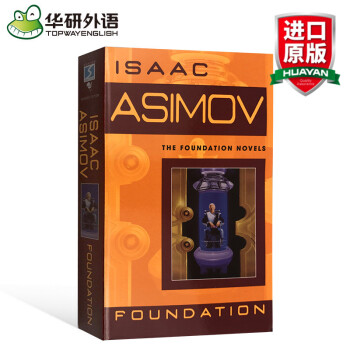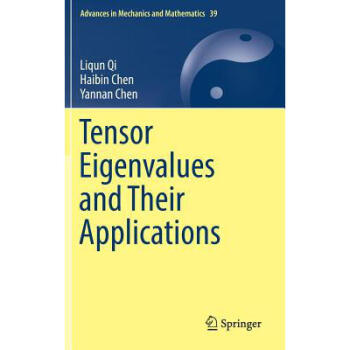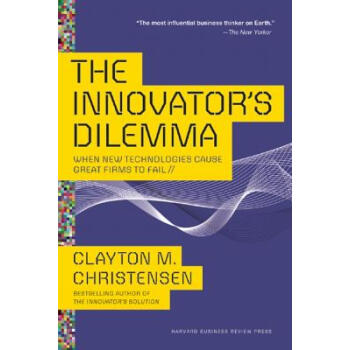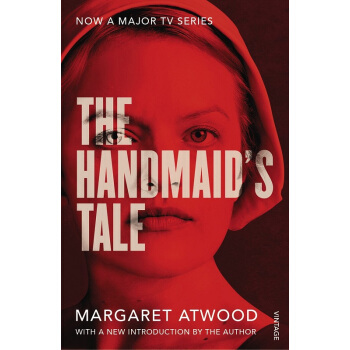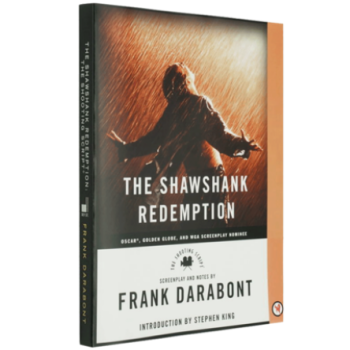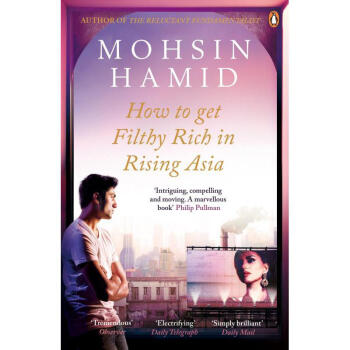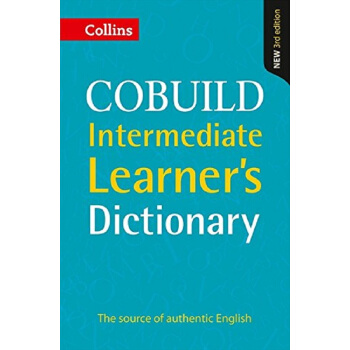

具体描述
书名:The Partnership: The Making of Goldman Sachs高盛帝国
作者:Charles D. Ellis
出版社名称:Penguin Books
出版时间:2009
语种:英文
ISBN:9780143116127
商品尺寸:14 x 3.9 x 21.3 cm
包装:平装
页数:768
The Partnership: The Making of Goldman Sachs《高盛帝国》是一部全面讲述高盛屹立百年的企业传记。本书是继《高盛文化》一书之后对高盛的合伙人历程进行细致描写的又一部佳作。作为格林尼治公司的创始合伙人,《高盛帝国》作者埃利斯对于高盛的发展可谓了如指掌,而他的叙述也使得高盛的合伙人形象跃然纸上:精明而又积极进取的萨克斯家族成员、态度强硬和狂热并且不知疲倦地工作的格斯·利维、谦逊随和而又按照既定计划坚持前进的乔恩·科尔津……而埃利斯通过对高盛不同业务线发展历程的梳理,使我们非常清楚地看出其发展的脉络:为公司带来大量赢利的私人服务、为公司带来大量客户和良好声誉的并购业务、让公司陷入困境的研究业务等。
★全面讲述高盛屹立百年的企业传记,行业必读书
★中信集团总经理常振明,中国证监会研究中心主任祁斌,中国社会科学院副院长李扬,中信证券公司董事长王东明,财经大学校长王广谦联袂
★揭开高盛集团的神秘面纱,深入探究高盛集团的发展历程
媒体评论
“合伙人制度究竟对高盛意味着什么?是合伙人制度与生俱来的一荣俱荣、一损俱损的集体凝聚力?还是个人利益与集体利益融合之后带来的强大动力?抑或是合伙体质带来的灵活应变及低调务实的态度?读完这本书之后,相信每个人对于这些问题都会有自己的答案。”——王东明中信证券公司董事长
“这部书以生动的语言摊开了高盛的正常发展史,娓娓细数公司多次突围求生和勇攀高峰的感人经历,从中可以领悟到公司精妙的制度安排、精当的管理艺术以及深厚的文化根基。如果你想要了解一个完整的高盛、想要借鉴高盛的经验教训,此书无疑值得一读。”——王广谦财经大学校长
“这是我在新浪博客上专门过的一部书。的方式也很简单,把其中的一些我认为比较有意思并且对我自己有启发的故事讲出来。因为我始终认为,故事本身的力量和魅力会远远大于任何对它们的归纳与总结。因此,对于这部书,我会让公司全体员工人手一册。”——王冉易凯资本有限公司创始人、首席执行官
The inside story of one of the world’s most powerful financial Institutions
Now with a new foreword and final chapter, The Partnership chronicles the most important periods in Goldman Sachs’s history and the individuals who built one of the world’s largest investment banks. Charles D. Ellis, who worked as a strategy consultant to Goldman Sachs for more than thirty years, reveals the secrets behind the firm’s continued success through many life-threatening changes. Disgraced and nearly destroyed in 1929, Goldman Sachs limped along as a break-even operation through the Depression and WWII. But with only one special service and one improbable banker, it began the stage-by-stage rise that took the firm to global leadership, even in the face of the world-wide credit crisis.
Review
“Rich with insider lore as well as the closed-door dramas of partnership clashes.”—The New York Times Book Review
“Exhaustively researched... paints a convincing picture of an institution that has got most of the important things right.” —The Economist
究竟是一种什么样的力量使高盛崛起为世界知名投行?
它如何能够与众多的合作伙伴合作并创造了巨大的财富?
它如何能在众多竞争激烈的业务中力拔头筹?
它如何在欧洲、亚洲、北美和南美一步步地登上的位置?
它如何成为IPO、并购、外汇交易、股票经纪、衍生品、对冲基金、商品、私人股份投资以及房地产行业的领军企业?
作为为高盛提供战略咨询服务超过30年的专家,查尔斯·埃利斯与高盛现任和以前的多位合伙人保持着密切联系。在本书中他深入描述了高盛重要的时期,并通过揭示那些关键的人和事来讲述成就高盛地位的丰富且引人入胜的故事。
Charles D. Ellis is a consultant to large institutional investors and government agencies. For thirty years he was managing partner of Greenwich Associates, an international business strategy consulting firm he founded that serves virtually all the leading financial service organizations around the world. Ellis earned his M.B.A. from Harvard University and his Ph.D. from New York University. He has taught investment management courses at Harvard and Yale and is the author of twelve books, mostly on investing, and has written nearly one hundred articles for business and professional magazines. Ellis has served on the boards of Harvard Business School and Phillips Exeter Academy. A past trustee of Yale University and Chair of its investment committee, he is trustee of Robert Wood Johnson Foundation, director of Vanguard, and chair of the Whitehead Institute of Biomedical Research and consults on investing with major institutions in Asia, Europe, and North America.
This book was almost never written—several different times. In the winter of 1963 at Harvard Business School, I was, like all my classmates, looking for a job. My attention was drawn to a three-by-five piece of yellow paper posted at eye level on a bulletin board in Baker Library. In the upper left corner was printed “Correspondence Opportunities” and typed to the right was the name “Goldman Sachs.” As a Boston securities lawyer, my dad had a high regard for the firm, so I read the brief description of the job with interest but was stopped by the salary: $5,800. My then wife had just graduated from Wellesley with three distinctions: she was a member of Phi Beta Kappa, a soprano soloist, and a recipient of student loans. I was determined to pay off those loans, so I figured I’d need to earn at least $6,000. With no thought of the possibility of earning a bonus or a raise, I naively “knew” I could not make it on $5,800. So Goldman Sachs was not for me. If I had joined the firm, like everyone else who has made a career with Goldman Sachs I would never have written an insider’s study of Goldman Sachs.*
In the early 1970s, while promising future partners that we would develop our fledgling consultancy, Greenwich Associates, into a truly superior professional firm, I had to laugh at myself: “You dummy! You make the promise, but you don’t even know what a truly superior professional firm is all about or how to get there. You’ve never even worked for one. You’d better learn quickly.”
From then on, at every opportunity I asked my friends and acquaintances in law, consulting, investing, and banking which firms they thought were the best in their field and what characteristics made them the best. Over and over again, well past the bounds of persistence, I probed those same questions. Inevitably, a pattern emerged.
A truly great professional firm has certain characteristics: The most capable professionals agree that it is the best firm to work for and that it recruits and keeps the best people. The most discriminating and significant clients agree that the firm consistently delivers the best service value. And the great firms have been and will be, sometimes grudgingly, recognized by competitors as the real leaders in their field over many years. On occasion, challenger firms rise to prominence—usually on the strength of one exciting and compelling service capability—but do not sustain excellence.
Many factors that contribute to sustained excellence vary from profession to profession, but certain factors are important in every great firm: long-serving and devoted “servant leaders”; meritocracy in compensation and authority; disproportionate devotion to client service; distinctively high professional and ethical standards; a strong culture that always reinforces professional standards of excellence; and long-term values, policies, concepts, and behavior consistently trumping near-term “opportunities.” Each great organization is a “one-firm firm” with consistent values, practices, and culture across geographies, across very different lines of business, and over many years. All the great firms have constructive “paranoia”—they are always on the alert for and anxious about challenging competitors. However, they seldom try to learn much from competitors: they see themselves as unique. But like Olympic athletes who excel in different events, they are also very much the same.
用户评价
说实话,我本来对这类“大部头”的行业报告持保留态度的,总担心会充斥着太多行业术语和自吹自擂的内容。然而,这本书的叙事节奏出乎意料地流畅,读起来有一种引人入胜的“史诗感”。我特别留意了其中关于“人才吸引与保留机制”的章节。书中对于如何设计一个既能激励顶级交易员又能有效约束其道德风险的薪酬体系的探讨,极其深刻。它不像一般的管理学书籍那样停留在理论层面,而是通过具体的历史案例——比如某次重大人事变动背后的权力博弈和利益重新分配——来展示制度的弹性与刚性。我发现,许多现代投资机构奉为圭臬的管理原则,其雏形都能在这本书描绘的早期合伙制结构中找到清晰的源头。最让我感到震撼的是,作者对“信任资本”的定义和衡量。在那个信息不透明的年代,合伙人之间的相互信任是如何被量化,并成为公司最宝贵的资产,这种“无形之物”的管理方法,远比讨论资产负债表上的数字来得更有价值。我建议所有从事资产管理或私募股权行业的人,至少要精读其中关于“传承与代际交接”的那几章,那才是真正考验一家机构生命力的试金石。
评分这本厚重的著作,初捧在手便觉沉甸甸的,光是装帧设计就透着一股不容置疑的专业与历史感。我最近沉迷于研究金融史和大型机构的运作逻辑,因此对这类详尽描摹百年老店兴衰的书籍有着近乎痴迷的兴趣。读完前几章,我立刻被那种宏大叙事的气场所震撼。它没有采用那种枯燥的编年史叙事,而是巧妙地将关键的历史转折点与制度变迁穿插起来,形成了一张密不透风的分析网络。比如,它对早期合伙人如何平衡风险资本与人力资本的讨论,简直是一堂生动的商学院案例课。作者似乎拥有极强的洞察力,能够从海量的档案资料中提炼出那些决定机构命运的微小决策。更让我欣赏的是,它对“文化”塑造“业绩”的强调。书里详细描述了早期华尔街精英们在着装、社交、乃至家族传承上所展现出的那种近乎仪式化的自我要求,这种文化壁垒是如何帮助他们构建起一道难以逾越的护城河。阅读过程中,我时常需要停下来,查阅一些背景资料,才能完全理解某些术语或历史事件的深层含义,这反而让我觉得收获更扎实。它不仅仅是在讲一个金融机构的故事,更像是在解剖一个复杂生命体的肌理结构,探究其如何在激烈的市场竞争中维持长期的精英地位和超额回报。这本书对任何想深入理解顶级财富管理机构内核的人来说,都是一份不可或缺的地图。
评分我对那些能够跨越数十年依然保持行业领导地位的组织结构深感兴趣,而这本书提供了一个绝佳的样本进行深度剖析。从阅读体验上来说,它有一种奇特的“沉浸感”,仿佛你就是坐在十九世纪末的纽约办公室里,亲眼见证那些金融巨头们如何通过一纸合同来定义未来的财富分配规则。作者对早期合伙人制中“退出机制”的描述尤其值得玩味。一个成功的组织,必然要有清晰且被广泛接受的“退场”方式,否则内部的权力僵化将是不可避免的。书中对几位关键人物的“光荣引退”与“被动出局”的对比分析,揭示了权力交接的微妙艺术,即如何让老一辈的智慧得以延续,同时为新生代腾出空间。这种对组织生命周期的深刻理解,让这本书摆脱了单纯的公司历史书的范畴,上升到了管理学和组织行为学的高度。它成功地将那些复杂的金融操作置于一个更广阔的社会和历史背景下进行考察,对于理解现代资本主义运作的底层逻辑,有着无可替代的启发性。
评分这本书的专业性令人敬佩,但真正让我想为之击节叫好的,是它对“资本的伦理”这一宏大命题的探讨。它没有回避在追求极致利润的过程中,合伙人制度所必然带来的道德困境和利益冲突。书中详述了数次内部“君子协定”的瓦解与重建过程,展示了当个人利益与集体存亡发生冲突时,制度是如何在压力下被扭曲或被强化。这部分内容读起来十分引人入胜,因为它揭示了光鲜外表下的权力斗争和人性弱点。我尤其欣赏作者对“有限责任合伙人”和“普通合伙人”之间权力动态的细致描绘,这不仅仅是法律上的划分,更是一种心理上的区隔,直接影响了公司的文化导向和风险偏好。对于那些希望在自己的职业生涯中建立长期信誉和稳固地位的专业人士来说,书中对于“声誉资产”如何被积累和消耗的案例分析,简直是教科书级别的警示录。它教会我们,在金融这样一个高风险的领域,速度固然重要,但步履的审慎和信誉的维护,才是决定你能走多远的真正力量。
评分从一个对商业哲学更感兴趣的读者的角度来看,这本书的价值远超一份商业传记。它更像是一部关于“精英群体如何构建共识与权力结构”的社会学著作。我关注的重点在于那些看似不经意的“软性因素”如何转化为硬核的竞争优势。比如,作者花了大量笔墨描述早期合伙人圈子内部的教育背景和社交网络,这种高度同质化的背景如何形成了一种强大的“内部语言”和“排他性”,从而有效过滤掉了外部的干扰和不被认可的竞争者。这种精英主义的构建过程,既是其成功的基石,也是其后期面临变革时的最大阻力,书中对这种内在矛盾的剖析非常到位,充满了辩证的智慧。阅读过程中,我不禁思考,在如今这个高度数字化、信息爆炸的时代,这种基于人际信任和地域集中的“合伙人模式”是否还能持续发挥其魔力?书中的历史案例提供了一个绝佳的对比视角,让我们得以审视传统精英架构在面对颠覆性技术时的脆弱性与韧性。它没有给出简单的答案,而是提供了一套强大的分析框架去审视当前的商业世界。
相关图书
本站所有内容均为互联网搜索引擎提供的公开搜索信息,本站不存储任何数据与内容,任何内容与数据均与本站无关,如有需要请联系相关搜索引擎包括但不限于百度,google,bing,sogou 等
© 2025 book.coffeedeals.club All Rights Reserved. 静流书站 版权所有


